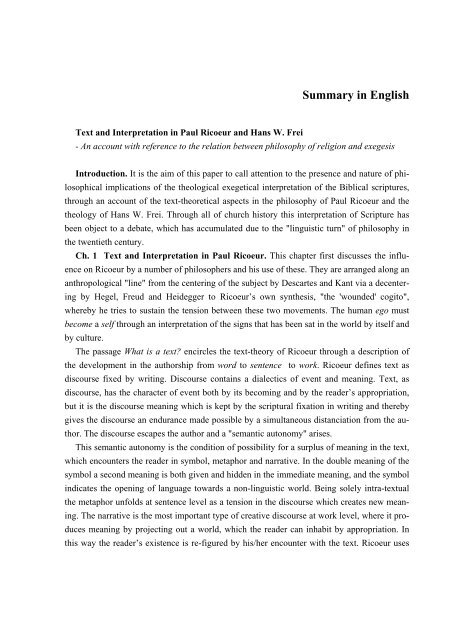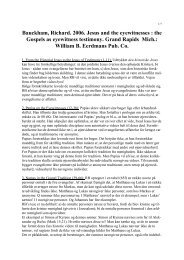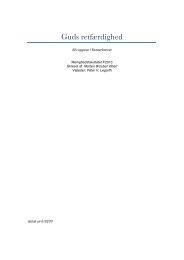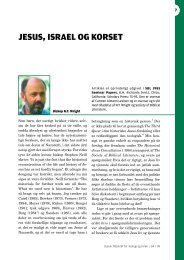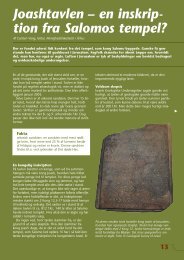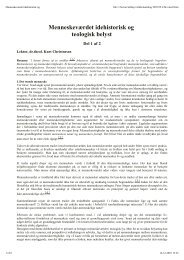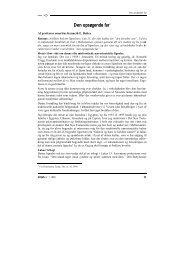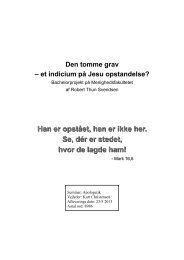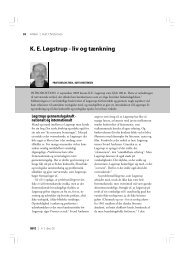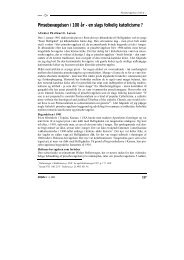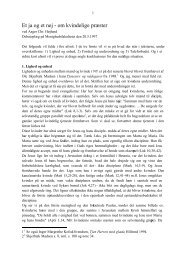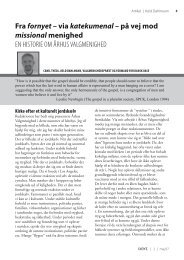Indholdsfortegnelse
Indholdsfortegnelse
Indholdsfortegnelse
Create successful ePaper yourself
Turn your PDF publications into a flip-book with our unique Google optimized e-Paper software.
Sammenfatning og konklusion 189<br />
Summary in English<br />
Text and Interpretation in Paul Ricoeur and Hans W. Frei<br />
- An account with reference to the relation between philosophy of religion and exegesis<br />
Introduction. It is the aim of this paper to call attention to the presence and nature of philosophical<br />
implications of the theological exegetical interpretation of the Biblical scriptures,<br />
through an account of the text-theoretical aspects in the philosophy of Paul Ricoeur and the<br />
theology of Hans W. Frei. Through all of church history this interpretation of Scripture has<br />
been object to a debate, which has accumulated due to the "linguistic turn" of philosophy in<br />
the twentieth century.<br />
Ch. 1 Text and Interpretation in Paul Ricoeur. This chapter first discusses the influence<br />
on Ricoeur by a number of philosophers and his use of these. They are arranged along an<br />
anthropological "line" from the centering of the subject by Descartes and Kant via a decentering<br />
by Hegel, Freud and Heidegger to Ricoeur’s own synthesis, "the 'wounded' cogito",<br />
whereby he tries to sustain the tension between these two movements. The human ego must<br />
become a self through an interpretation of the signs that has been sat in the world by itself and<br />
by culture.<br />
The passage What is a text? encircles the text-theory of Ricoeur through a description of<br />
the development in the authorship from word to sentence to work. Ricoeur defines text as<br />
discourse fixed by writing. Discourse contains a dialectics of event and meaning. Text, as<br />
discourse, has the character of event both by its becoming and by the reader’s appropriation,<br />
but it is the discourse meaning which is kept by the scriptural fixation in writing and thereby<br />
gives the discourse an endurance made possible by a simultaneous distanciation from the author.<br />
The discourse escapes the author and a "semantic autonomy" arises.<br />
This semantic autonomy is the condition of possibility for a surplus of meaning in the text,<br />
which encounters the reader in symbol, metaphor and narrative. In the double meaning of the<br />
symbol a second meaning is both given and hidden in the immediate meaning, and the symbol<br />
indicates the opening of language towards a non-linguistic world. Being solely intra-textual<br />
the metaphor unfolds at sentence level as a tension in the discourse which creates new meaning.<br />
The narrative is the most important type of creative discourse at work level, where it produces<br />
meaning by projecting out a world, which the reader can inhabit by appropriation. In<br />
this way the reader’s existence is re-figured by his/her encounter with the text. Ricoeur uses


